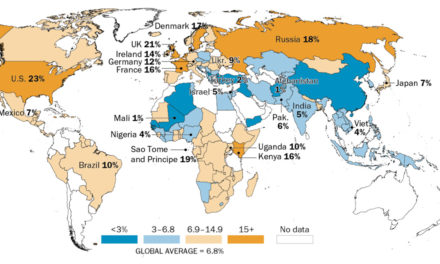Essential treatments for diabetes, ADHD and bacterial infections are among the 305 drugs in short supply this year, the American Society of Health-System Pharmaceuticals and Axios report — the most since 2014.
Drug shortages occur when there’s not enough of a medicine to treat everyone who needs it. According to the Manhattan Institute, these shortages can be caused by manufacturing problems, regulations and a lack of transparence.
Manufacturing Problems
Delays in making drugs’ active ingredients, creating and shipping doses, and other supply chain problems can ripple into drug shortages.
A Food and Drug Administration (FDA) review of new or updated manufacturing processes can also decrease production of a drug.
Regulations
The government heavily regulates drug manufacturing practices and start-ups, making it difficult for drug manufacturers to respond to free-market incentives.
In a market with no regulations, rising drug prices would encourage businesses to make more drugs — they can earn more money by meeting customers’ needs. Additionally, higher prices usually incentivize entrepreneurs seeking a piece of the drug profits to start new drug manufacturing businesses.
Heavy regulation also makes it difficult for drugs made in other, trusted countries to enter the U.S. — even when they would alleviate a shortage.
Lack of Transparency
The FDA is responsible for identifying drug shortages and overseeing manufacturers, but it gives citizens almost no insight into its process and methods. This lack of information makes it difficult for regulators, drug distributors like hospitals and pharmacies, and patients to:
- Understand the cause of a shortage.
- Determine if the problem is isolated or systemic.
- Find alternatives.
- Plan reforms.
The well-publicized shortage of Adderall, reportedly prescribed to 41 million American ADHD patients, exemplifies the difficulty of untangling drug shortages.
Increased prescriptions are partially to blame for the drug’s scarcity, which has lasted over a year. Though already on the rise, ADHD diagnoses increased precipitously during the COVID-19 Pandemic, according to the Centers for Disease Control and Prevention, likely due to worsening mental health problems and relaxed regulations allowing doctors to prescribe Adderall through telehealth appointments.
But another explanation for the lack of Adderall arose just three months ago, when two government agencies effectively announced, as Time puts it, “nearly a third of the DEA-allocated allowance of a highly profitable prescription drug appears to be missing.”
Adderall is a stimulant prone to abuse, so the government only allows manufacturers to make a certain amount. In a joint letter released in August, the FDA and Drug Enforcement Agency (DEA) claim drug manufacturers only sold 70% of their Adderall quotas.
“A lot of people in the industry have told me that this number seems way too high,” senior fellow and health care economist at the Brookings Institute Marta Wosińsk tells Time, “but there’s no information.”
Rumors abound without relevant data, like which manufacturers reported low sales. Some of Wosińsk’s colleagues suspect drug distributors are keeping the missing medication for fear of being blamed if overprescribing amphetamines becomes a health emergency.
However, the missing 30% could also be caused by something as mundane as clerical errors, Wosińsk says.
Manufacturers likely won’t be allowed to increase their production past their usual quotas until the missing sales are at least accounted for, Wosińsk predicts. If manufacturers can’t increase their production, the shortage could continue for months to come.
It’s important for families seeking mental health care to know and plan for medication shortages. Make sure to consult with a licensed psychiatrist — ideally in-person — to determine what medications might be appropriate, whether they are available, and what potential alternatives are.
For more information about adolescent mental health problems and talking to your kids about mental illness, click here.
Additional Resources:
What Is Mental Health and Why Is It Important for Your Family?
Talking to Your Kids About Mental Illness: When Mental Illness Hits Home






